Rethinking digital transformation of healthcare amid COVID-19: How marketers can adapt to changing dynamics
Updated on Apr 8, 2020
The Healthcare Fight Against Covid-19
We have all declared war against the COVID-19 virus outbreak and the industry which is leading the fight is the healthcare industry. We are very grateful for the efforts and sacrifices of frontline healthcare workers doing their best to contain the virus.
This is indeed turbulent times for global healthcare businesses—fighting the virus, ensuring people’s health concerns besides COVID-19 are still taken care of, and emergency surgeries carry out on time. To keep up with the new way of things, the healthcare industry is forced to go through a major digital transformation at an unprecedented pace.
The State of Digital Transformation in Healthcare
The healthcare industry was pretty slow in embracing the digital age. With the lack of government regulations and the way we see healthcare (more as a service than a business), there has been relatively less pressure on the healthcare industry to go digital.
However, COVID-19 has changed everything. Governments around the globe have suddenly relaxed healthcare regulations and started providing healthcare industry in a more flexible way to provide essential health services to those in need. The industry received the much-needed push to go digital and embraced new challenges using technology.
The Good News: Telemedicine, Virtual Care and Home Therapies
For several decades now, virtual healthcare management, telehealth, and digital health have been heralded as important to the future of healthcare. However, the process of digital transformation has been very difficult and slow due to regulations, the need for behavioral changes, and the lack of incentives to act fast.
Here are some statistics from Deloitte showing patient willingness to embrace telehealth services:
- 60% of millennials expect and support telehealth to replace in-office visits
- 74% of people say they are very open to a virtual health visit
- 83% of patients after a telehealth visit felt they received good quality care
We’re already seeing governments relaxing regulations and social distancing mandated by COVID-19 is initiating a natural experiment in remote care. Most governments are unlikely to revert to the status quo, and indeed an acceleration is likely.
The Digitally Empowered Patient
On the other hand, patients are more empowered than ever. The number of patients with internet access, who are mobile-enabled and digital savvy has been on a steep rise in the last two decades. Pew Research’s nation-wide survey conducted in the United States back in 2013 is still relevant in today’s context:
- 1 in 3 American adults has gone online to figure out a medical condition
- 72% of internet users say they surfed for health information last year
- 40% of internet users search for the doctor or hospital before engaging
- Commonly researched topics include symptoms, specific diseases, and treatments
For more details on the subject, please refer to Forrester’s latest report on empowered patients here.
Results Are Already Here
- French firm Doctolib SAS has seen an 18-fold jump in the number of video consultations in March 2020
- US health insurers have agreed to cover coronavirus-related telemedicine
- Forrester has already projected a hockey-stick adoption curve for virtual care in the United States
Are You a Healthcare Marketer?
Given the current situation, a lot can be done as far as marketing and digital teams in healthcare are concerned. If you are wondering how you can cater to these new market dynamics, we’ve got you covered.
13 Tactics Healthcare Marketers Can Adapt Amid COVID-19
It’s time for healthcare businesses to think proactively about improving and extending their digital capabilities. More importantly, marketers in healthcare should focus on meeting the latent needs of the patients, helping them in adapting digital channels and educating them regarding the crisis with socially responsible messages.
Here are several low-hanging digital marketing techniques to help you navigate your efforts in times of crisis.
1. Design COVID-19 Information Campaigns
As the frontline fighters of the virus outbreak, healthcare providers are responsible for making sure that they communicate the right messages in the most effective way possible. Make use of information bars on your website to update your visitors with the latest updates.
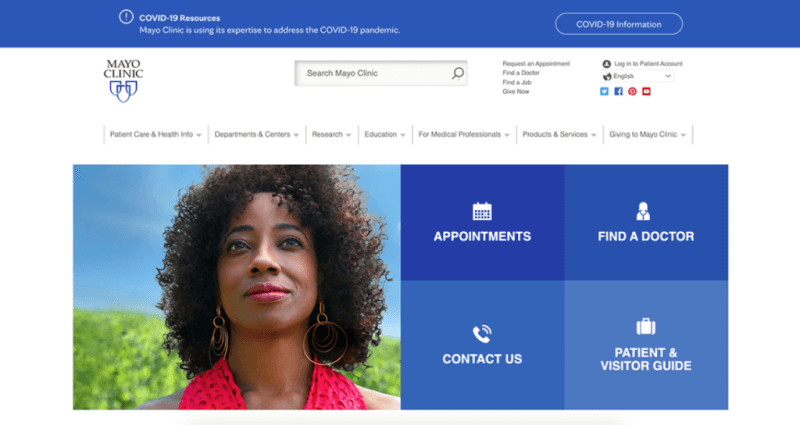
2. Keep All Your Digital Channels Open
From online chat to contact forms and a prominent display of contact phone numbers, healthcare marketers must try to reduce friction online and encourage patients to get in touch with healthcare businesses through all available channels.
3. Educate Your Visitors About Myths
Wrong or misleading information can spread faster than the virus and at times can become equally deadly as well. Make use of customizable website banners to educate your visitors about the latest situation.
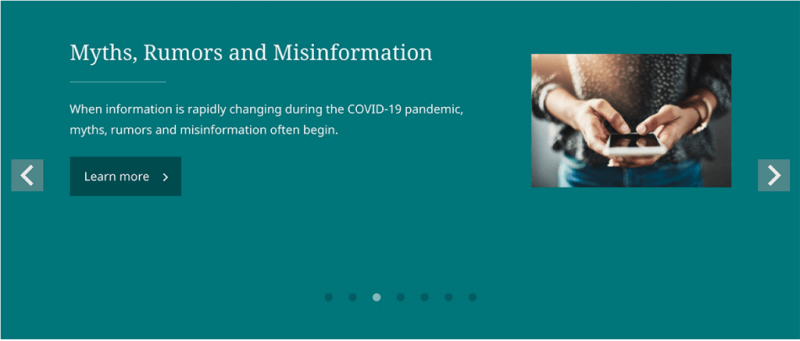
4. Promote Health Consciousness and Hygiene
You can use social stories to promote health improvement campaigns, hygiene tips, mental health campaigns or steps to take during emergencies in an engaging way.
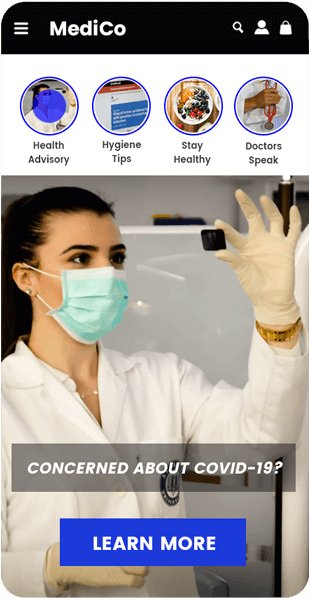
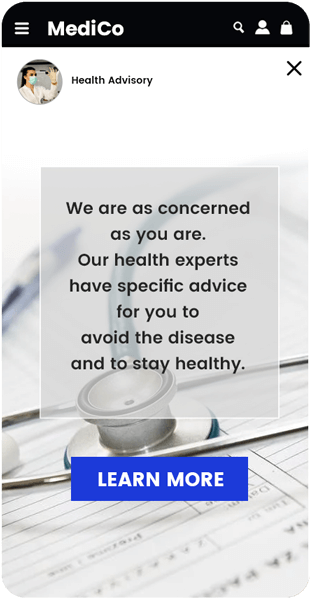
5. Design COVID-19 Self Assessment Surveys
Many people might be in a situation of panic or distress and as trustees of the general health of people, hospitals can reach out to them with self-assessment surveys and tools. This can also provide valuable data around what’s happening with the general population and play an important role in initiating policy and health interventions.
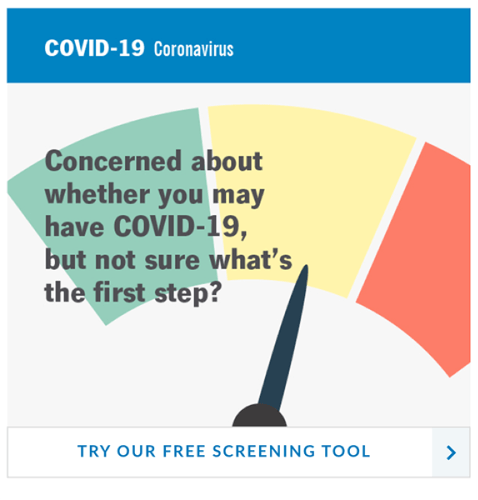
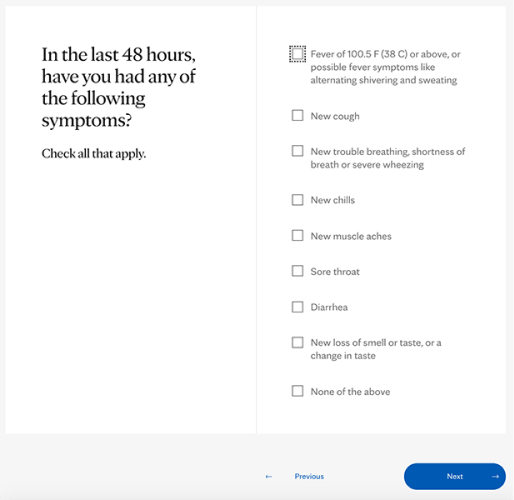
6. Use Overlays for Important Updates
Patients may not be in a position to reach your hospital physically or they might not be able to reach you via usual contact numbers. In such cases, it’s important to inform them about any policy changes, testing procedures or emergency steps using website overlays and make sure visitors click and engage with your updates.
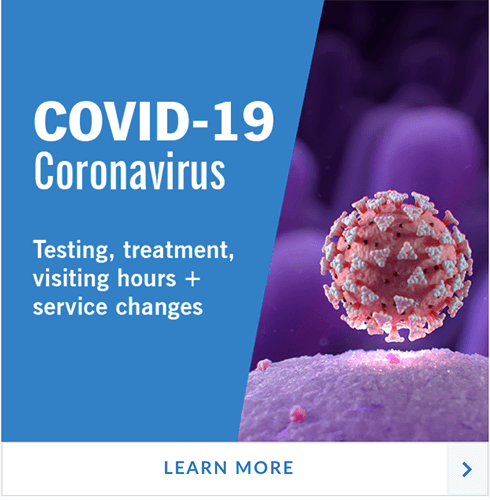
7. Design Smart Banners to Increase Mobile App Downloads
If you already have a mobile app capable of managing appointments, this might be the right time to promote it. You can place a smart banner on your web pages to enable users to directly click and download your mobile app.
For example, Mayo Clinic’s app allows patients to request an appointment with their doctors and view test results. With a few taps, patients can get immediate care for common illnesses. What makes the app really useful to patients is its daily health news feature. Cleveland Clinic also has a similar mobile app that they promote on their website.
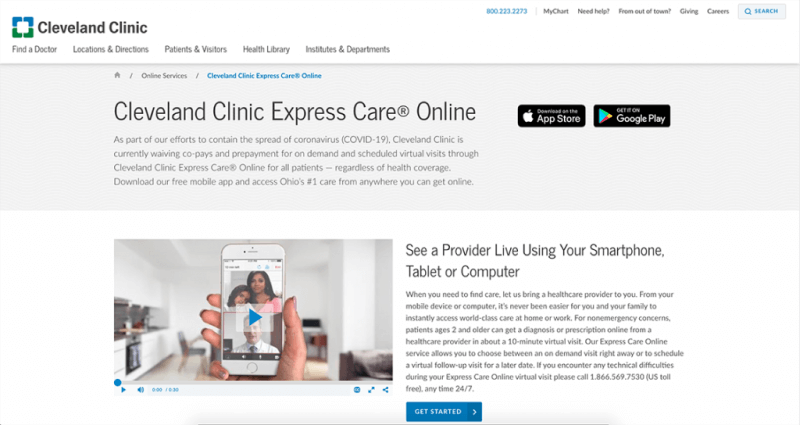
8. Leverage Automated and Newer Digital Channels for COVID-19 Outreach
It’s time for you to leverage automated and AI-based digital channels like chatbots and Facebook Messenger to engage your visitors, collect data and improve patient care. Especially in times of resource constraints and traffic overload, these channels can come handy.
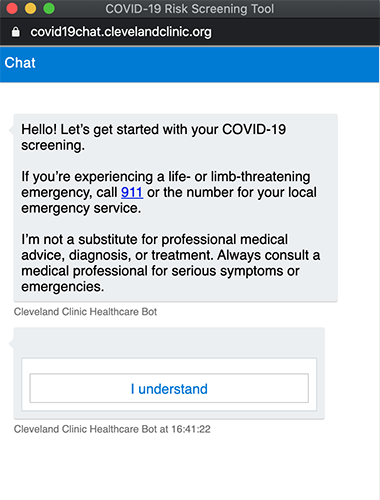
9. Disincentivize Hospital Visits
Encourage non-emergency patients to defer hospital visits and book online consultations. You can simply channel clicks from your hospital locator pages and google map listings to your digital channels.
10. Give Tailored Advice for the High-Risk Category
Even though COVID-19 patients are prioritized, hospitals need to acknowledge that there may be other highly-vulnerable patients that need urgent care. For this, you should consider integrating your existing patient database with a customer data platform (CDP) to get a 360 view of your patients. This can later be used to identify patients who are most vulnerable, who need emergency care or surgery. Synching a CDP with your existing CRM platform can help you reach out to your patients with timely and tailored solutions and helpful advice.
11. Promote TeleConsultation via OmniChannel Marketing
In the wake of the COVID-19 pandemic, hospitals are scrambling to set up facilities for telemedicine consultations. For most non-emergency medical cases, teleconsultation can be an effective way to avoid patients visiting hospitals while making sure their illness is not unattended. If you feel you don’t have the capabilities yet for doing this, you can refer to this resource guide from Forrester to partner with a few companies who are already doing this.
You can also build helpful customer journeys across multiple channels to promote teleconsultation.
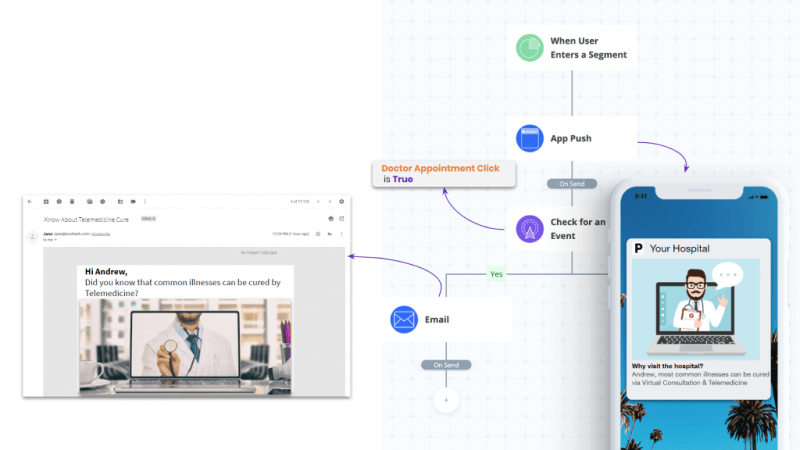
12. Promote ePharma
You can deliver medicines, test kits, personal protection equipment and more to the people in need using ePharma partnerships. Check out our latest blog on how ePharma marketers can navigate the crisis.
13. Find Ways To Appreciate Your Staff
Along with customer reach out through digital channels, it’s also important for hospitals to honor and appreciate healthcare workers.
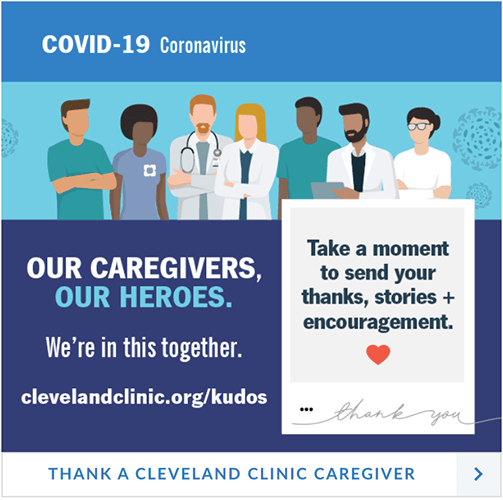
Before You Go
The digital revolution in healthcare is gaining momentum with the COVID-19 outbreakDigital and tech-savvy patients are demanding healthcare services at their fingertips. It’s up to the healthcare marketers and digital leaders to embrace the changing needs of customers to successfully enable digital healthcare.



















